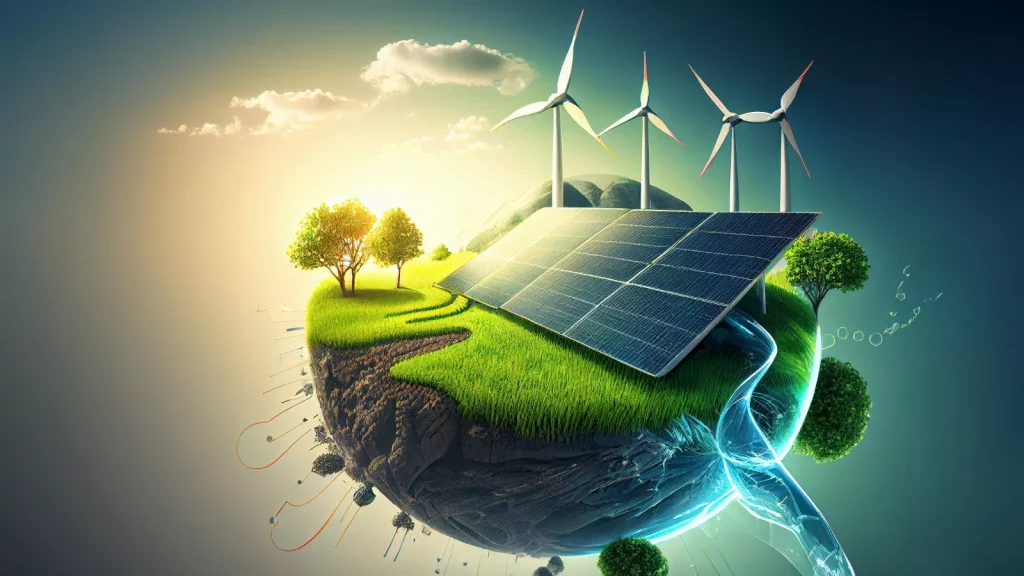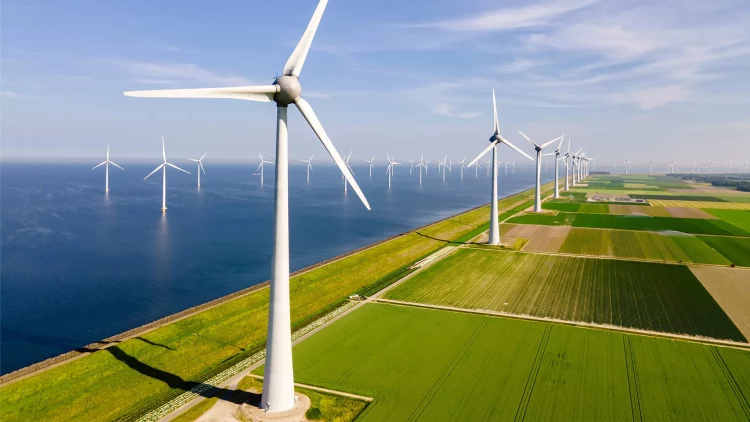Introduction
The transition to clean energy is one of the most crucial challenges—and opportunities—facing the global economy in the 21st century. As climate change accelerates and environmental concerns grow, both Europe and the United States have committed to ambitious goals for reducing carbon emissions, enhancing energy efficiency, and adopting renewable energy sources. However, the paths these two economic powerhouses are taking to achieve their clean energy objectives differ significantly, driven by distinct political landscapes, energy resources, and technological innovations.
In this article, we will explore the green energy transitions in both Europe and America, comparing their policies, investments, and market dynamics. We will look at how the European Green Deal and the U.S. Biden administration’s policies are influencing renewable energy sectors such as solar, wind, and electric vehicles (EVs). Additionally, we will examine the role of the private sector in driving these transitions and assess whether Europe or the United States will emerge as the global leader in the green energy revolution.
Europe’s Green Deal: A Bold Vision for Clean Energy
Europe’s green energy transition is driven largely by the European Green Deal, a comprehensive policy initiative aimed at making Europe the first climate-neutral continent by 2050. Launched in December 2019, the European Green Deal outlines a series of ambitious targets and strategies to decarbonize the economy, reduce pollution, and promote sustainability across all sectors.
- Renewable Energy Expansion:
One of the key pillars of the European Green Deal is the expansion of renewable energy. The EU has set a target to increase its share of renewable energy in total consumption to at least 32% by 2030, with a longer-term goal of achieving carbon neutrality by 2050. This shift will be achieved through an aggressive push towards wind, solar, and hydropower, as well as investments in renewable hydrogen technologies.- Wind Power: Europe has long been a global leader in wind energy, particularly in offshore wind farms. Countries like Denmark, Germany, and the UK are expanding their offshore wind capacity as part of their green energy strategies. In fact, the EU has committed to installing 300 GW of offshore wind capacity by 2050, a tenfold increase over current levels.
- Solar Energy: Solar power is another key component of Europe’s clean energy future. With sun-drenched regions like Spain, Italy, and Greece, the EU is focusing on increasing solar panel installations across rooftops, solar farms, and industrial complexes. Germany, a leader in solar technology, continues to promote solar as a cornerstone of its energy strategy.
- Carbon Reduction and Climate Goals:
A central objective of the European Green Deal is to reduce greenhouse gas emissions by at least 55% by 2030 compared to 1990 levels. The European Union Emissions Trading System (EU ETS) plays a central role in this strategy, setting a cap on the total amount of emissions allowed in the EU and using a market-based approach to encourage companies to reduce their carbon footprints. Additionally, the EU has introduced a carbon border adjustment mechanism to ensure that imported goods from countries with less stringent environmental standards are subject to carbon taxes, effectively leveling the playing field for European industries. - Electric Mobility:
The electric vehicle (EV) sector is another cornerstone of Europe’s green transition. The EU has set a target for 40% of new car sales to be electric by 2030, and zero-emission vehicles to account for 100% of sales by 2035. To achieve this, European governments are providing substantial subsidies, tax incentives, and investing in EV infrastructure, including public charging stations. Major European automakers such as Volkswagen, BMW, and Daimler are increasingly focusing on EV production, creating competition and spurring innovation in the market.

US Energy Policies: The Biden Administration’s Push for Clean Energy Investments
While Europe’s green energy transition has been underway for several years, the United States has made significant strides in its own push toward clean energy under the leadership of President Joe Biden. Upon taking office in 2021, Biden made it clear that addressing climate change would be a top priority for his administration. His policies have focused on incentivizing clean energy investments, promoting technological innovations, and meeting carbon-neutrality targets by 2050.
- The Inflation Reduction Act:
In August 2022, Biden signed the Inflation Reduction Act (IRA) into law, which is one of the most significant pieces of climate legislation in U.S. history. The IRA includes $369 billion in clean energy incentives, aimed at accelerating the transition to renewable energy and reducing carbon emissions. Some of the key provisions of the IRA include:- Tax Credits for Renewable Energy: The IRA extends and enhances the Investment Tax Credit (ITC) for solar, wind, and other renewable energy projects, making it easier for developers to secure financing for large-scale renewable energy infrastructure.
- Electric Vehicle Tax Credits: The IRA provides significant tax incentives for consumers who purchase electric vehicles, with an emphasis on domestic manufacturing to boost the U.S. EV market.
- Clean Energy Infrastructure: The IRA also allocates funds to build out the infrastructure needed for clean energy, such as expanding the electric vehicle charging network and improving the power grid to accommodate increased renewable energy production.
- Renewable Energy Growth:
Under the Biden administration, the solar and wind industries in the U.S. have seen significant growth. The U.S. solar market alone is expected to add over 40 GW of capacity in 2025, a large portion of which will be supported by incentives in the IRA. The wind sector, particularly offshore wind, is also poised for rapid expansion, with projects along the U.S. East Coast moving forward and investment in offshore wind technology increasing. - Electric Mobility:
In the U.S., the EV market is growing rapidly, driven by the Biden administration’s commitment to electric mobility. The goal is to have 50% of all new car sales be electric by 2030. The IRA’s EV incentives are already having an impact, making electric vehicles more affordable for American consumers. Additionally, the U.S. is investing in EV charging infrastructure to ensure that electric vehicles can be easily adopted across the country, particularly in rural and underserved areas.
Market Dynamics: Competition and Cooperation in Renewable Energy
As both Europe and the U.S. strive to lead the green energy transition, market dynamics are shifting in the renewable energy sector. Renewable energy companies in both regions are both competing and cooperating, with opportunities arising from the growing demand for clean energy.
- Global Renewable Energy Companies:
Some of the most well-known global players in renewable energy are based in Europe and the U.S. Iberdrola (Spain), Ørsted (Denmark), and Siemens Gamesa (Germany) are among the European giants driving wind and solar energy development. In the U.S., companies like NextEra Energy, First Solar, and Tesla are leading the charge in clean energy, from solar power to electric vehicles. - Infrastructure and Scaling Up:
One of the biggest challenges for both Europe and the U.S. is scaling up the infrastructure needed to support the rapid growth of renewable energy. This includes building more solar farms, wind turbines, energy storage systems, and electric vehicle charging stations. Private investment and public funding are essential to meet these infrastructure demands, and collaboration between the public and private sectors will be key to overcoming these challenges. - Technological Innovation:
Both Europe and the U.S. are investing heavily in technological innovation to make renewable energy more affordable and efficient. Energy storage technologies, such as batteries and hydrogen storage, are seen as crucial for balancing intermittent renewable energy sources like wind and solar. Similarly, carbon capture and storage (CCS) and green hydrogen are emerging as important technologies that could help accelerate the transition to a carbon-neutral economy.
Outlook: Who Will Lead the Green Transition?
As the green transition accelerates, the question of who will lead the world in clean energy remains open. Both Europe and the U.S. have set ambitious goals, and both have the resources and policies in place to drive innovation and investment. However, the green transition is not without challenges. Europe must balance its ambitious climate goals with economic and political realities, particularly as it seeks to mitigate the impact of the energy crisis exacerbated by geopolitical tensions. In the U.S., while the Inflation Reduction Act is a landmark achievement, the ongoing political divide could threaten the long-term continuity of clean energy policies.
In the end, the private sector will play a pivotal role in driving the green transition, whether through innovations in renewable energy technologies, investment in new infrastructure, or the development of new markets for clean energy products and services.






























